Technologies
Everything I Hope Apple Adds to iOS 17 for the iPhone
The next version of iPhone software is expected at WWDC. Hopefully the new iOS has all these features.
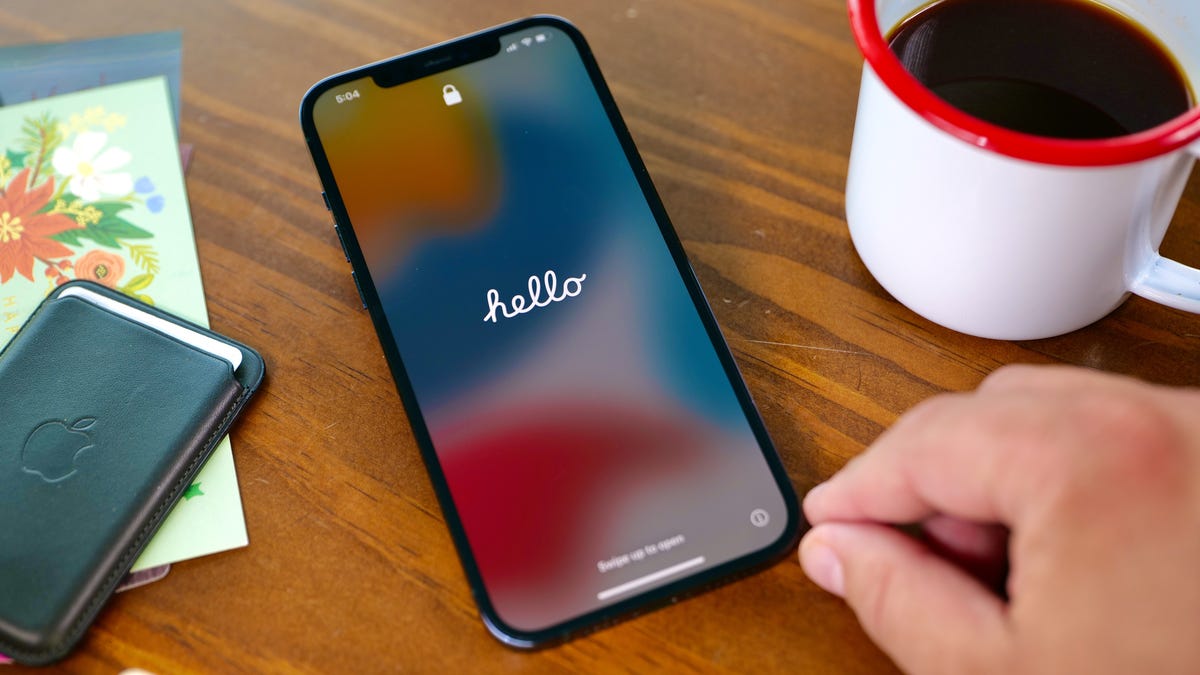
Apple will hold its Worldwide Developers Conference keynote presentation on June 5, where CEO Tim Cook and gang are expected to announce the next major version of iPhone software, iOS 17. Though rumors point to the software update being overshadowed by new Mac hardware and a long-rumored and yet-to-be-announced AR/VR headset, the next version of iOS should still boast significant improvements.
It could include a feature that lets you view more items on your lock screen, according to a Bloomberg report. The lock screen would reportedly show calendar appointments, weather and notifications, similar to Android devices circa-2019 and smart displays like the Amazon Echo Show. This would follow on the heels of iOS 16, which brought a major overhaul of the iPhone’s lock screen that made it more customizable.
With iOS 17, iPhone owners could also gain the ability to sideload apps, according to a different Bloomberg report. Sideloading means you can download an app on your iPhone without using Apple’s App Store. The potential inclusion is likely meant to ensure compliance with new European regulations due to kick in next year.
While I find those rumors fun to ponder, they can also be a distraction from the many other things I think Apple needs to add or improve in iOS. The additions I want range from significant changes, like adding support for the Apple Pencil for Pro Max and Plus models, to smaller, quality-of-life improvements, like adding a volume button to the iPhone’s virtual Apple TV remote. We have to wait until WWDC to see what actually unfolds, but here’s my iOS 17 wish list.
Bring ‘Visual Look Up’ to the Camera app
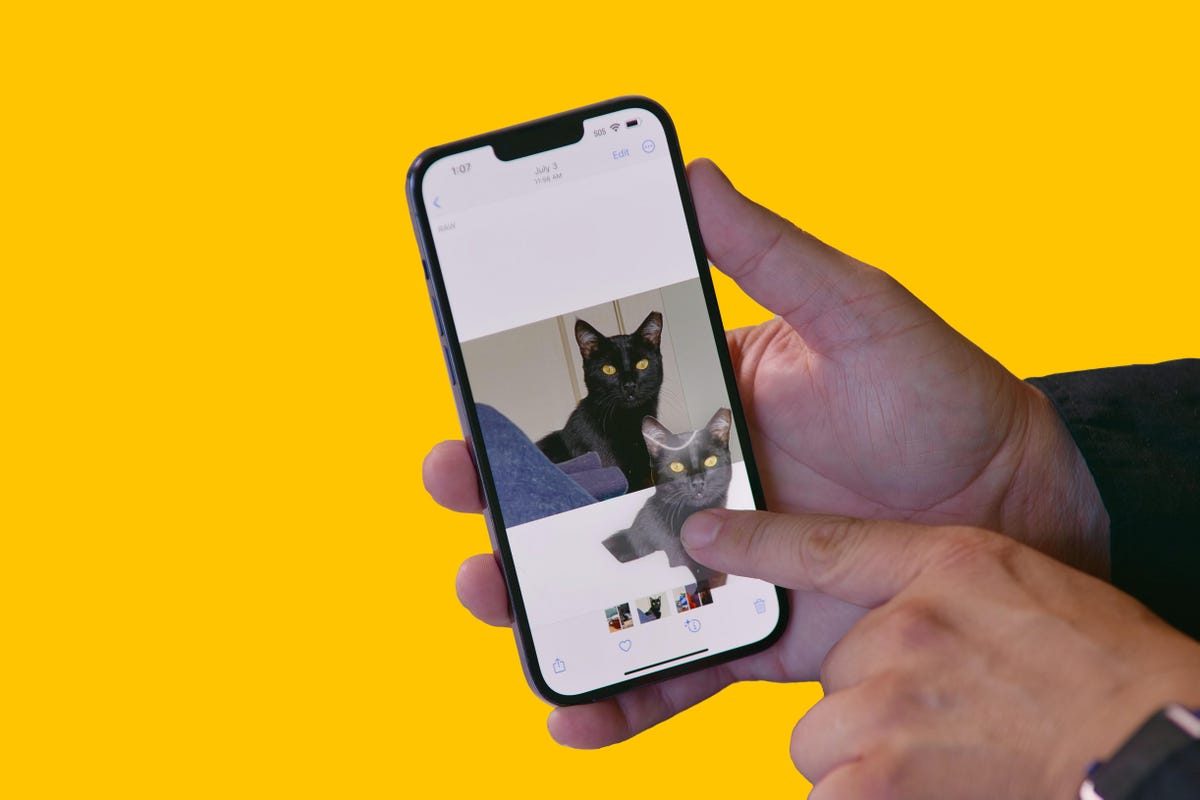
In iOS 16, Visual Look Up got a nifty shortcut that lets you cut out the subject of a photo just by tapping and holding on the image.
Visual Look Up launched with iOS 15 in 2021 and can recognize objects in your photos such as plants, food, landmarks and pets. In iOS 16, Visual Look Up expanded to let you lift an object out of a photo or PDF by tapping and holding, essentially creating a sticker you can share with others.
But there’s a catch. Visual Look Up works only after you take a photo. I hope iOS 17 lets you do the same thing straight from the camera viewfinder. For example, if the camera were open and pointed at flowers, I could tap the Visual Look Up icon to see what kind of flowers they were without taking a photo of them. You can do that with Live Text, and Google Lens does something similar on Android phones. I realize this isn’t a radical change, but it would streamline things a bit.
Add a volume button to the iPhone’s Apple TV remote
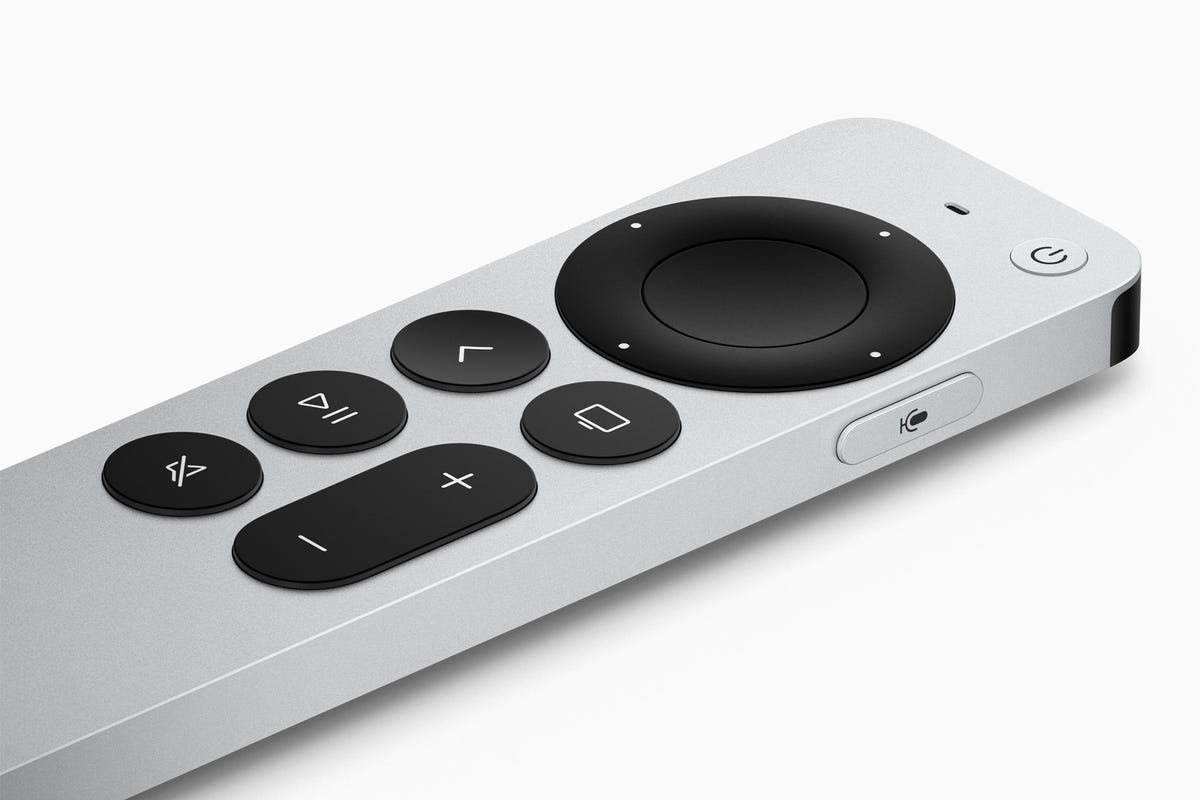
Sometimes you lose this little guy and need to use your iPhone to control your Apple TV.
If you own an Apple TV, you’ve no doubt misplaced the tiny minimalist aluminum remote control at some point. Fortunately, you can use a virtual remote on your iPhone to do nearly everything the physical Siri remote does, except change the volume. Apple, please add a volume button to the iPhone’s Apple TV remote.
Technically, when you use the Apple TV remote on your iPhone, you can press the physical volume buttons to control the TV volume. But this doesn’t work on every TV’s audio receiver, such as mine. I’d guess there are many people who, like me, just want the virtual remote on the iPhone’s screen to mimic the physical remote’s button layout; most importantly including the button for volume.
Bring fitness tracking to the iPhone
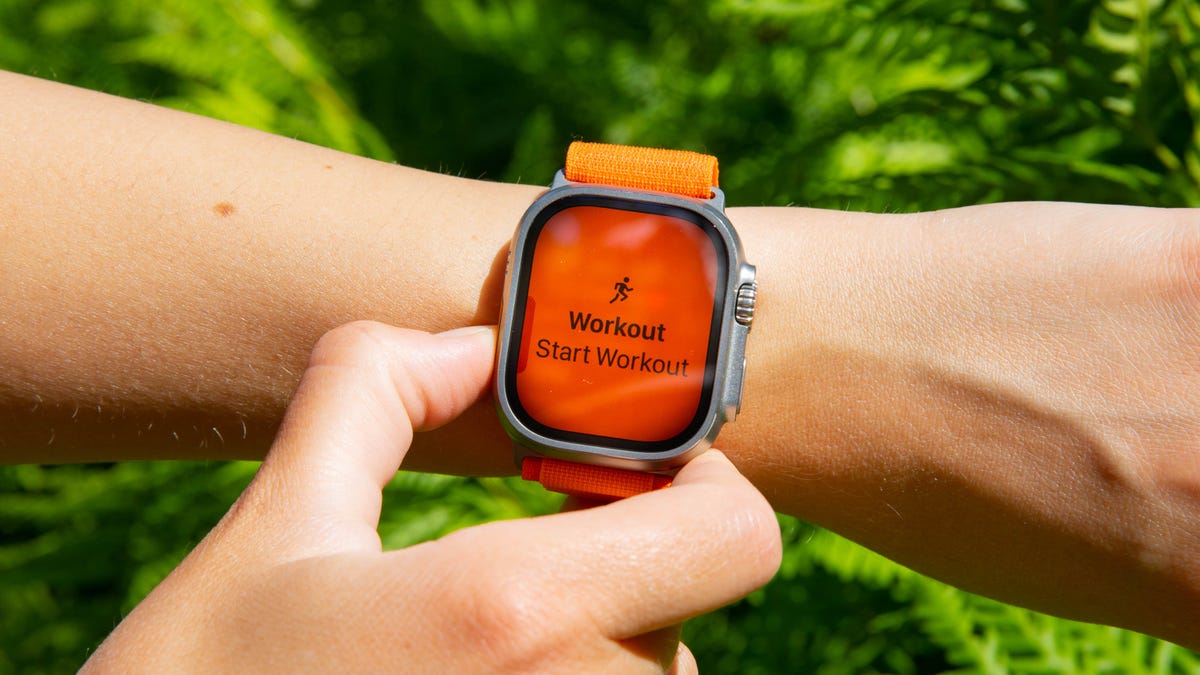
You can start workouts from your Apple Watch, but not from your iPhone (without a third-party app).
If you’re an Apple Watch user, you understand the convenience of recording a workout. But if you aren’t wearing your watch or don’t own one, there isn’t a way to record basic exercises like walking, running or cycling without a third-party app. I’d like to see Apple expand the Fitness app so you can record workouts even without a Fitness Plus membership.
Add a pro camera app
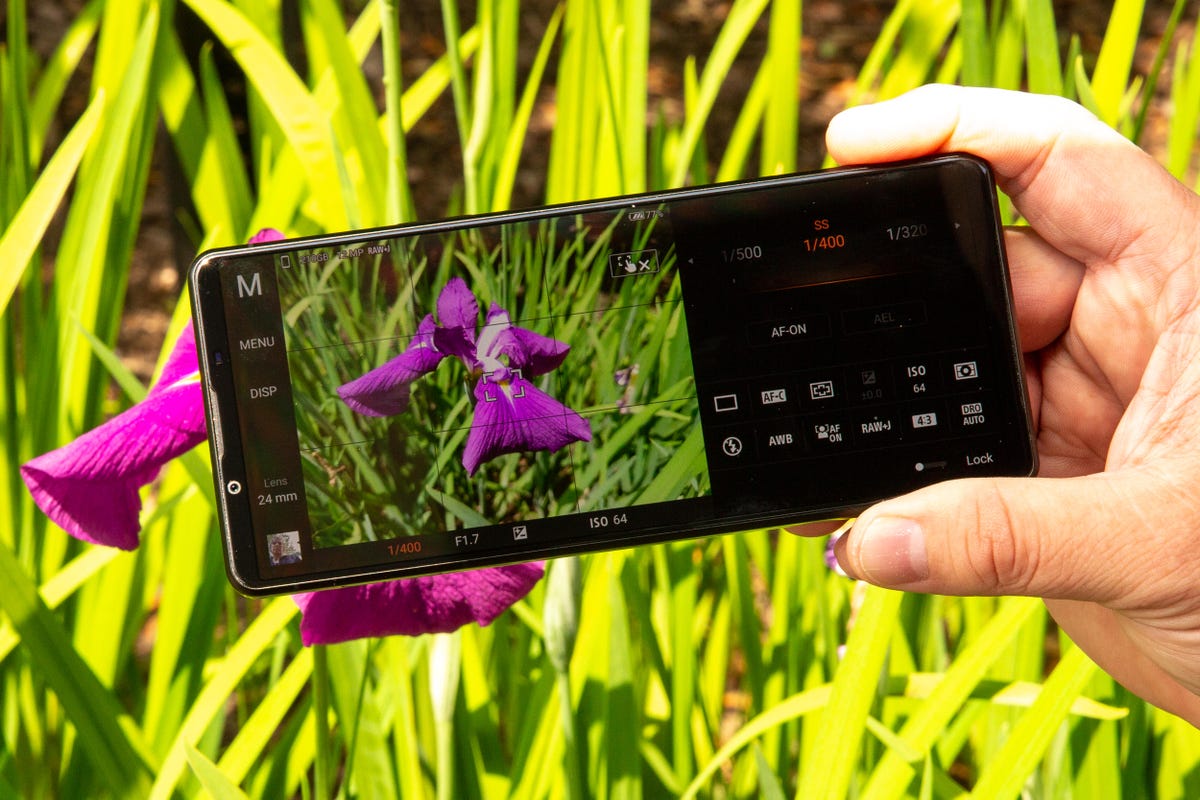
The Photo Pro app on Sony Xperia 1 and 5 series phones gives you an interface that looks identical to a professional mirrorless camera.
It’s time for Apple to revisit the iPhone’s Camera app. For years, it was the gold standard of simplicity, offering a «see what you get» preview for photos, videos and effects with minimal, easy-to-navigate controls and modes. But as Apple has added more functionality, especially for ProRaw photos and ProRes video recording on iPhone Pro models, the Camera app has started to feel cramped. It tries to remain a one-size-fits-all app at the expense of higher-end features like manual camera controls.
I’d like Apple to make a separate pro camera app, along the lines of how it created a standalone app for classical music. Apple Music Classical tackles the special challenge of categorizing, searching for, and discovering classical music, something the default Apple Music app isn’t geared toward. Similarly, the pro camera app could be a place for creative types to access camera controls, settings and features beyond those in the basic camera app. Sony has been quite successful with this sort of approach in its Xperia 1 and 5 series phones, and Samsung has a separate Expert Raw app to complement its main one. Now it’s Apple’s turn.
Let me customize the Dynamic Island
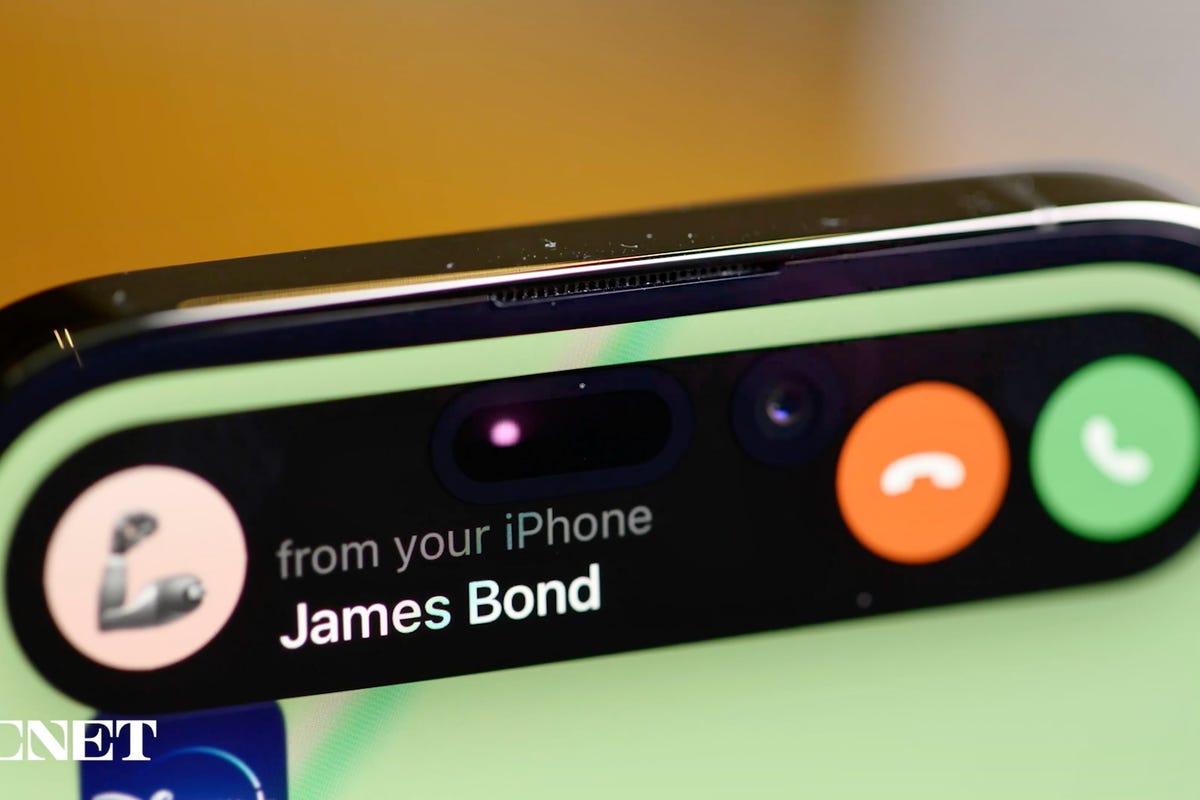
The Dynamic Island was a great addition to the iPhone 14 Pro and 14 Pro Max.
The Dynamic Island works well. It’s like having a shortcut at the top of your screen no matter what you’re doing on your iPhone. Glancing at my Uber ride status from my lock screen or in the Dynamic Island just makes sense. But I want more from the Dynamic Island, especially if iPhone 15 rumors are right and non-Pro iPhone models get it too. I’d like to see Apple let people customize their own Dynamic Island in a curated way.
In 2016, with iOS 10, Apple rolled out the iMessage app store for stickers and games. I don’t think we need a Dynamic Island app store, but something like the ability to pin a Memoji sticker as a Dynamic Island icon would be great. Admittedly, as creative-minded as I am, I don’t have a brilliant example of exactly what I want. I just think the Dynamic Island is another way people could make their iPhone feel more personal. Customization was a big theme with Android this year at Google I/O, with the introduction of AI and cinematic wallpapers. Of course, Apple could view the Dynamic Island like it does Apple Watch faces and want to control how it’s changed, instead of letting people go hog wild.
Add Apple Card functionality to other credit cards
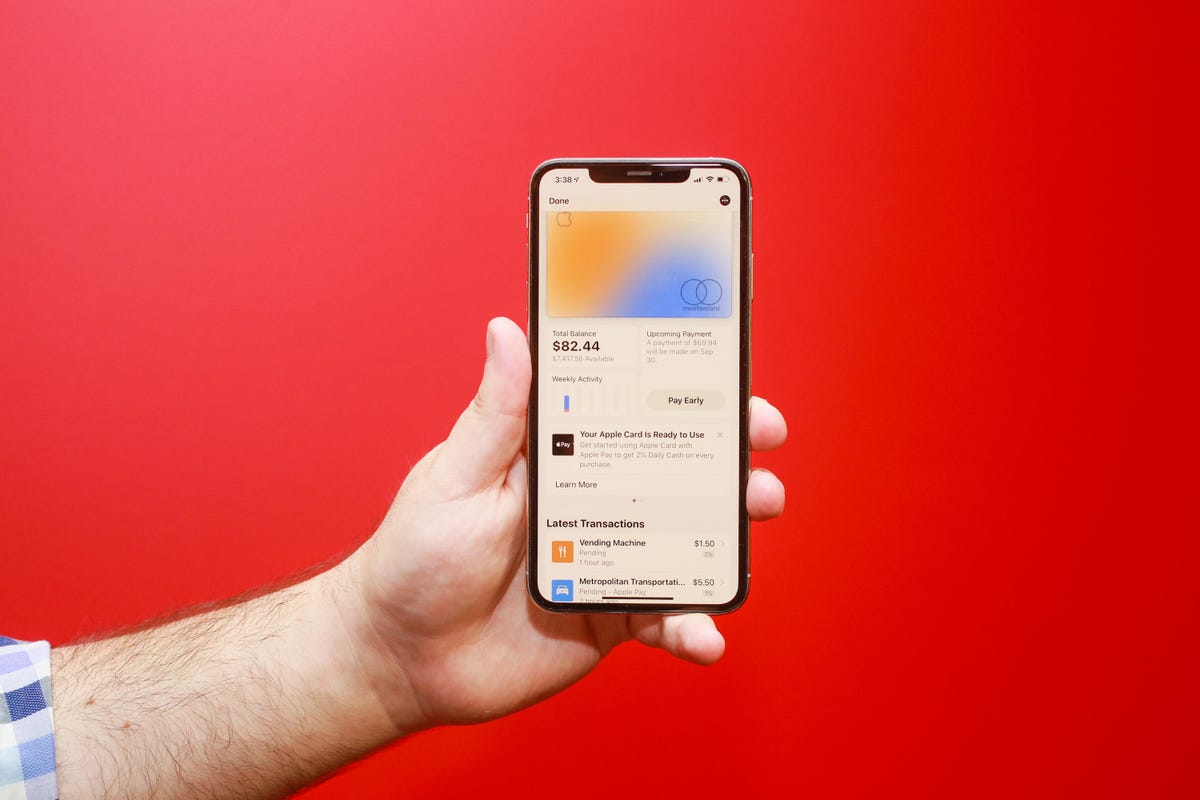
The Apple Card lives on your iPhone.
If you have an Apple Card, you get to experience one of the best mobile financial experiences on any phone today. Apple’s signature credit card lives virtually in the Wallet app. At first glance, it appears like any other Apple Pay card. But when you tap its digital avatar, you see the card’s balance, rewards, upcoming payment info, and transactions. I’d like Apple to open that functionality to non-Apple credit cards.
If your Bank of America credit card is in Apple Pay and you have the Bank of America app on your phone, wouldn’t it be great to access similar functionality in the Wallet app? Expanding access would be convenient for iPhone owners and could bolster Apple Pay and the iPhone’s Wallet as serious financial tools.
Make widgets interactive
Widgets can be pinned to your home screen and resized to your liking.
Widgets on the lock screen and home screen can do two things: show information (like the weather) and launch the corresponding app when tapped (e.g., the weather app). Widgets haven’t changed much since Apple introduced them with iOS 14. It’s time for a refresh.
What if you could use the podcast widget like a mini-podcast player, or order your favorite burrito bowl straight from Chipotle’s widget? Adding more functionality to widgets could make it easier to multitask on the iPhone.
Add Apple Pencil support
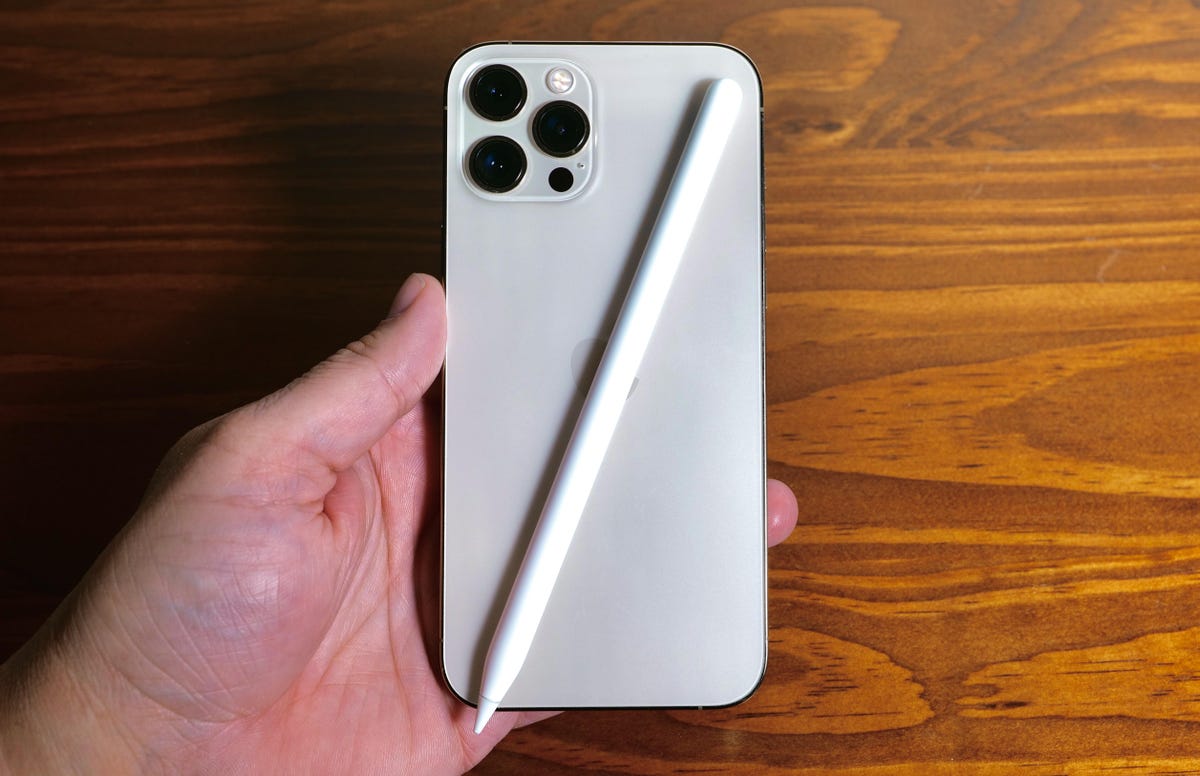
What if you could use an Apple Pencil on the iPhone?
I’ve been writing iPhone and iOS wish lists for years, and one addition that’s made my roundup every time is adding Apple Pencil support to the iPhone, specifically for Pro Max and Plus models. The 6.7-inch screen isn’t that much smaller than the 8.3-inch screen on the iPad Mini. But one supports Apple Pencil functionality and the other doesn’t.
Also, if iOS 17 did include Pencil support, Apple could make a smaller version of its stylus and call it the Apple Pencil Mini. Maybe it could attach to the back of the iPhone Pro Max or Plus using MagSafe?
Bring the iPad’s split-screen view to iPhone Pro Max models
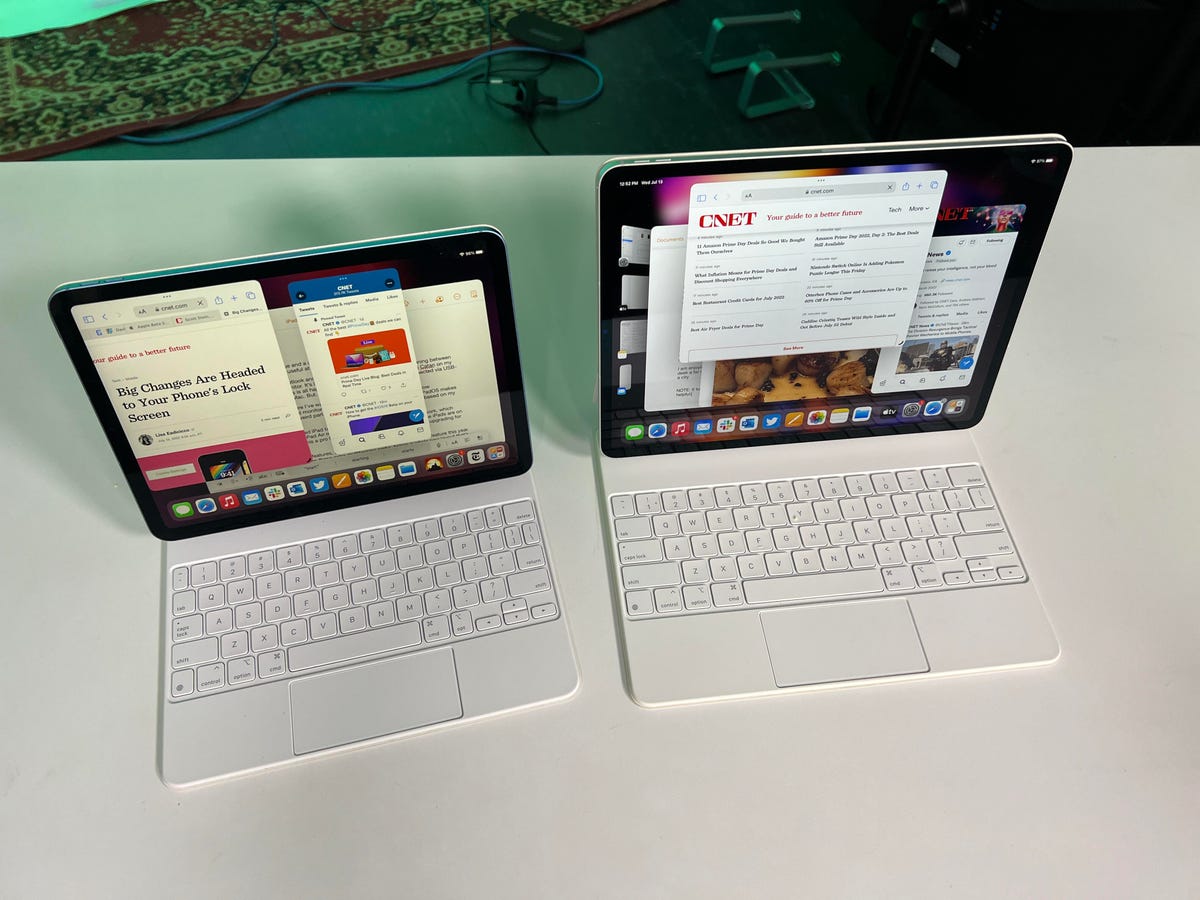
The multiple windows on the iPad and iPad Pro.
The iPhone Pro Max has been part of Apple’s lineup since 2019. The 11 Pro Max has a 6.5-inch screen, while the 12 Pro Max, 13 Pro Max and 14 Pro Max all have a 6.7-inch display. Last year, Apple introduced the iPhone 14 Plus, which also has a 6.7-inch screen. Those large screens feel wasted when it comes to software. Some iOS apps like Mail and Messages can take advantage of the extra space in landscape orientation to show a column of message previews next to the currently opened message. But otherwise, there isn’t much else in iOS that’s optimized for big iPhone screens.
I’d like Apple to bring some iPadOS features to iOS 17 just for Pro Max and Plus models, especially its split screen multitasking view. It would be wonderful to have Safari open on one side of the phone and launch Messages on the other.
Revisit ease of use vs. security
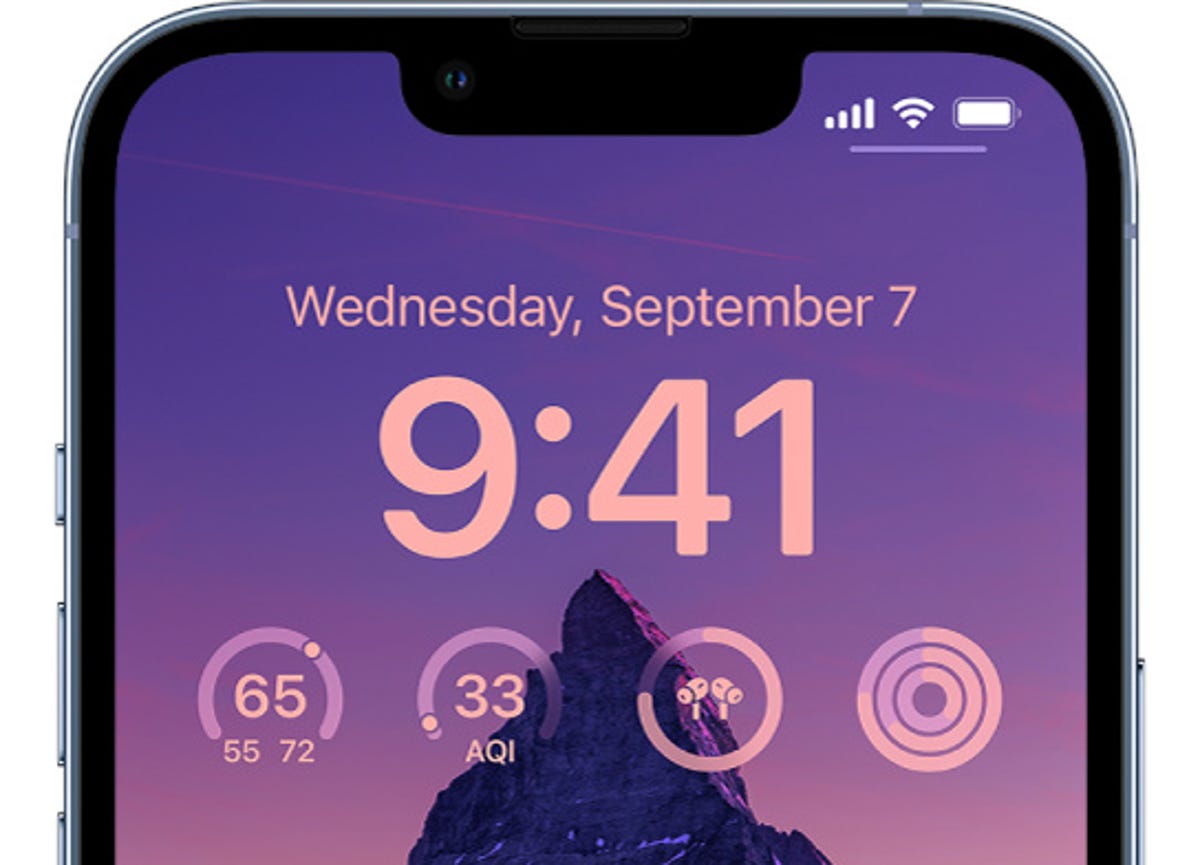
Some iPhone owners are being targeted for an unusual crime.
Earlier this year, The Wall Street Journal’s Joanna Stern and Nicole Nguyen ran a series of stories about how a thief who steals your iPhone and knows its passcode can lock you out of the most important parts of your digital life. This crime isn’t widespread, but Stern and Nguyen showed that it’s more common than you might think.
At the core of the issue is the balance between security and ease of access. The same tools Apple put in place to help people who get locked out of their devices and accounts are being used by savvy criminals to lock people out of their phone and accounts while gaining access to their money and services. There’s been a bunch of coverage on the topic in recent months, and it sounds like these tools help far more people than the criminals who take advantage of them.
I don’t think there’s an easy way for Apple to «fix» the issue, but I hope with iOS 17, the company takes a moment to reconsider the impact these tools can have on people and even offer other security features to foil the thieves behind these crimes, like Apple did with AirTags.
At the end of the day, I’m excited for WWDC this year. And while I do hope there’s a fancy, cool AR/VR headset, my heart is holding out for iOS 17 and all its new features.
Technologies
Using Kohler’s Poop-Analysis Camera? Double-Check This Key Privacy Setting First
Don’t perch on your camera-equipped throne assuming your «data» is end-to-end encrypted. It’s not quite that simple.
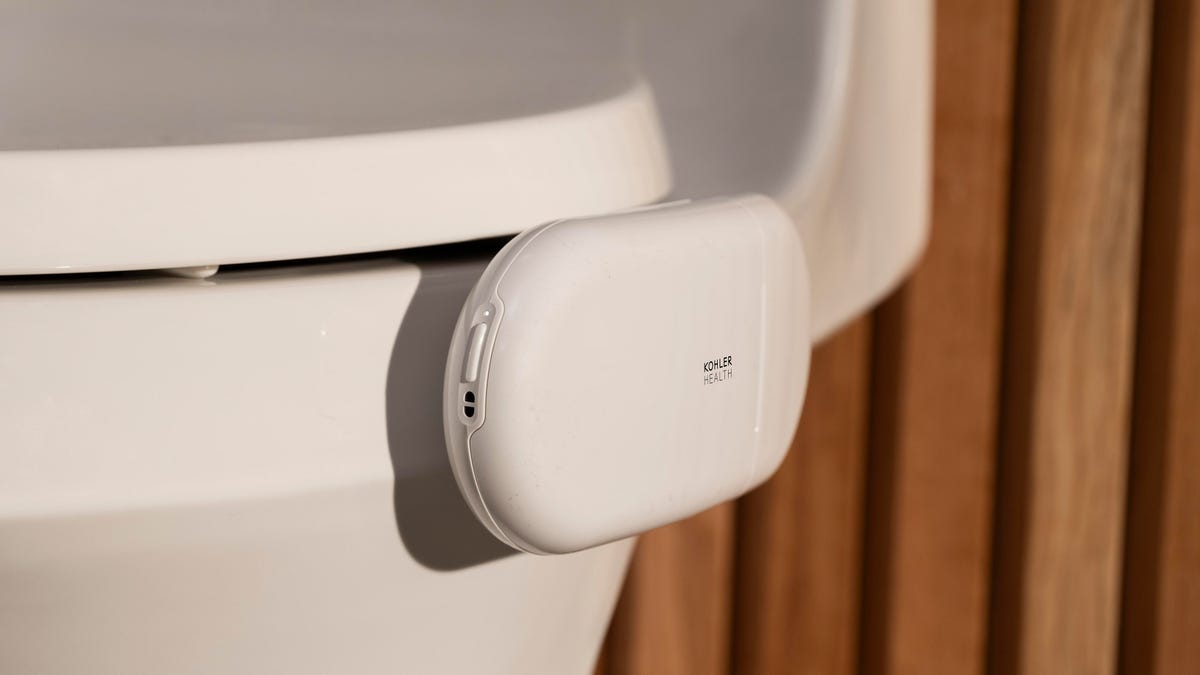
In October, Kohler launched Dekoda, a camera that attaches to a toilet and uses AI to examine your poop. Some say you can’t put a price on good gut health, but the Dekoda costs $599 for the device, plus a subscription fee that ranges from $70 to $156 per year.
But after a blog post published this week raised questions about Kohler’s data practices for its new toilet gadget, the company was forced to explained what it means by «encrypted» data for customers, and what its policy is for training its algorithms on their… uh… waste information. And it’s not as straightforward as it initially appeared to be.
Don’t miss any of our unbiased tech content and lab-based reviews. Add CNET as a preferred Google source.
On its website, Kohler says Dekoda «analyzes gut health and hydration and detects the presence of blood in the toilet bowl, providing data for building healthy habits.»
On the same webpage, Kohler touts privacy features for the gadget. It says that the camera only ever points down into the toilet bowl, that it offers fingerprint authentication optionally via the Dekoda remote and that, «our technology is designed to keep your personal data personal. It is end-to-end encrypted.»
The blog post published by security researcher Simon Fondrie-Teitler raised questions about what that encryption entails and pointed out that Kohler would likely have access to the data and images collected by Dekoda.
«Responses from the company make it clear that — contrary to common understanding of the term — Kohler is able to access data collected by the device and associated application,» he wrote.
Kohler responds to privacy concerns
Kohler itself appeared to confirm this notion in a statement it shared with CNET. It wrote: «The term end-to-end encryption is often used in the context of products that enable a user (sender) to communicate with another user (recipient), such as a messaging application. Kohler Health is not a messaging application. In this case, we used the term with respect to the encryption of data between our users (sender) and Kohler Health (recipient).»
The company went on to say: «We encrypt data end-to-end in transit, as it travels between users’ devices and our systems, where it is decrypted and processed to provide and improve our service. We also encrypt sensitive user data at rest, when it’s stored on a user’s mobile phone, toilet attachment and on our systems.»
In other words, the data Dekoda collects is encrypted in transit, but can be decrypted by the company on its end.
In regards to how the company uses the data for AI systems learning, Kohler said in the same statement: «If a user consents (which is optional), Kohler Health may de-identify the data and use the de-identified data to train the AI that drives our product. This consent check-box is displayed in the Kohler Health app, is optional and is not pre-checked.»
Based on Kohler’s statement, it will remove information that pairs a user’s identity with the data before it’s used for optional AI model training.
The meaning of ‘encrypted’
This may cause confusion for people who are familiar with the kind of end-to-end encryption offered by services such as Signal or even Apple. Here, the expectation that companies wouldn’t have access, or even a technological way, to decrypt data that people are transmitting through their services.
What Kohler is doing sounds different from that expectation, as Fondrie-Teitler points out in his post: «What Kohler is referring to as E2EE here is simply HTTPS encryption between the app and the server, something that has been basic security practice for two decades now, plus encryption at rest.»
Kohler did not respond directly to questions about Fondrie-Teitler’s post to CNET beyond the statement it shared.
Technologies
A Mario Kart Deal Worth Racing for, This Switch 2 Bundle Is Now $50 Off
With a discount on the console and game, this is one of the easiest Switch 2 savings to recommend.
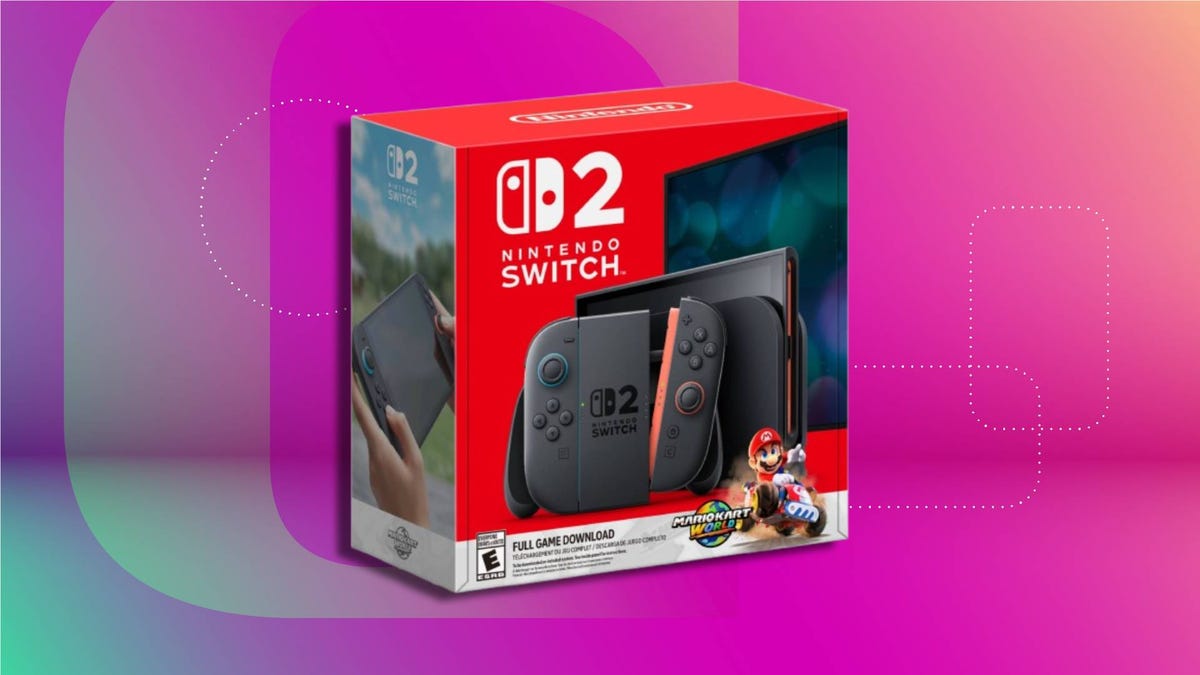
The Nintendo Switch 2 is one of the most popular handheld gaming consoles and it continues to sell out rapidly after its launch this year. Bundles are a great way to get a game included at no extra cost and this one is a standout.
Right now, Walmart is selling the Nintendo Switch 2 + Mario Kart World bundle for $449 — a $50 discount from the regular $499 price. If you prefer Amazon, the retailer is price-matching. Note that you’ll only see the lower price once you add the bundle to your cart on both platforms. That’s a $50 savings on the standard cost, making it one of the better Switch 2 deals I’ve seen after Black Friday.
This bundle includes the Switch 2 console along with a full game download of Mario Kart World, the newest entry in Nintendo’s long-running and wildly popular kart racing series. With the Switch 2’s improvements, Mario Kart World takes advantage of higher resolution, smoother frame rates and more detailed tracks than we’ve seen in past games.
CNET’s Scott Stein reviewed the Switch 2 and gave it 8.5 out of 10, praising its design, display and notably better graphics than rivals like the Steam Deck. The Switch 2 is an excellent overall upgrade and earned an Editors’ Choice award from our team. It is worth noting, however, that, in his tests, the battery lasted a mere 2 hours before dying. He points out that storage will need upgrades as well, given that newer games are larger in size.
While you’re buying the Switch 2, browse our roundup of Switch 2 accessories to deck it out and truly make it your own. And if you’re Team Blue, check our list of the best PlayStation deals too.
CHEAP GAMING LAPTOP DEALS OF THE WEEK
Why this deal matters
A $50 discount on a new console bundle is rare, especially this early in the Switch 2’s life cycle. Because Mario Kart World is a $70 title on its own, getting both the game and console for $449 is excellent value. If you’ve been waiting for a meaningful price break on the Switch 2, this is one of the best opportunities so far.
Technologies
You Can Turn Your Old Phone Into an MP3 Player. Here’s How
If you miss having an iPod, here’s the next best thing.

Back in the days before smartphones, it seemed like everyone had an MP3 player. The best-known device was the iPod, which debuted in 2001. It wasn’t the first portable media player, but it definitely helped popularize the idea of putting 1,000 songs in your pocket.
MP3 players continued to exist alongside smartphones for some time, and even added support for additional music file formats like WAV, AAC, WMA and FLAC. But as music streaming replaced the traditional practice of buying digital albums and tracks, it wasn’t long before having a separate music player felt redundant. iPod sales peaked in 2008 (the same year Apple launched the App Store for iPhones), and the last iPod was discontinued in 2022.
Still, just because you can keep all your music on your phone, that doesn’t mean it’s always the best idea. Let’s say you’re headed to the gym or going out for a run, and you don’t want to be tempted to check your messages. A separate portable music player gives you all your tunes without the distracting notifications.
Or say you’re somewhere with a poor signal: You’re riding the subway or driving through the woods, and you want to listen to a podcast. You can still access any episode that you’ve downloaded to your phone. But all those files take up precious storage space, which is probably already being used by your apps, photos and videos.
One solution is a 2000s throwback: keep all your music and podcasts on a separate device.
Before you rush out to buy a secondhand iPod or Zune, you might want to dig through that box in the back of your closet. Chances are, you already own a device that can be used as a dedicated MP3 player.
Your old smartphone is perfect for this task; it doesn’t have the classic iPod click wheel, but it can still run Spotify or hold the music files you own.
What are the requirements for turning an old phone into an MP3 player?
Your old phone probably no longer has a data plan. No problem: as long as it can still hold a charge and power up, you can play any track that you’ve saved in your digital music library.
If you can connect your device to Wi-Fi, you can use it to stream songs or podcasts. And if you download your files while your device is connected to your home internet, then you can take them with you wherever you go.
To save your songs and podcasts, you’ll need to use the latest version of your preferred music streaming app. Even if your old phone can’t upgrade to the latest system software, there’s a decent chance that it can still run Spotify, YouTube Music or similar apps.
Spotify can still be accessed on phones that were released eight years ago. You can download the app on any iPhone running iOS 16.1 (supported by devices as old as an iPhone 8 or iPhone X) or above. You have even more options if you use an Android phone: Spotify is supported on Android OS 7.0 (Nougat), which was released in 2016.
YouTube Music has similar requirements: you can download the app on iPhones running iOS 16 or above, and on Android phones running Android OS 8.0 or above.
SoundCloud can be downloaded on iPhones running iOS 16.4 or above, and on Android phones running Android OS 8.0 or above.
Apple Music has the fewest restrictions. The app can be downloaded on iPhones running iOS 10.0 or above, and Android phones running Android OS 5.0 or above.
How to put your music on your old smartphone
If you’re using a streaming app like Spotify or SoundCloud, you can download tracks, playlists and albums to listen to them offline. However, you’ll need to have a premium subscription to the service. (Spotify lets free users download podcasts.)
As for how much music, audiobooks and podcasts you can download, your main limit will be the amount of storage on your device.
Spotify lets you download up to 10,000 songs on up to five separate devices. You can keep your downloads indefinitely, as long as you maintain your Spotify Premium subscription and you access the app at least once every 30 days.
You can’t download individual songs separately on Spotify, but you can download albums or custom playlists. Tap the arrow icon to save the album or playlist to your library. Once they’re downloaded, they’ll be marked with a green arrow icon.
YouTube Music will let Premium users download an unlimited number of songs across up to 10 devices. To save a track for offline listening, tap the three-dots icon and tap Download. You’ll see a checkmark icon appear next to each saved track.
SoundCloud Go and Go Plus users can also download an unlimited number of tracks for offline listening. Tap the arrow icon next to any of your Liked songs and albums.
Apple Music subscribers can download up to 100,000 songs. Go to your library, tap the three-dots icon next to the tracks you want to save offline, and tap Download.
If you’ve purchased any songs or albums digitally, you can access those files from your phone’s music player app. And if you own CDs or other physical media, you might consider saving those tracks to your device with the help of an external disc drive.
Once your old phone is set up with your favorite tunes, all you need to do is find a pair of wired headphones and party like it’s 2005.
Don’t have an old phone? Here are some great portable MP3 players
If you don’t have an old smartphone lying around or don’t feel like setting it up, you can still buy a brand-new MP3 player. These modern devices are compact and easy to use. They’re relatively affordable, with some options under $100. And they include a headphone jack — arguably one of the most important components of a dedicated music player.
-

 Technologies3 года ago
Technologies3 года agoTech Companies Need to Be Held Accountable for Security, Experts Say
-

 Technologies3 года ago
Technologies3 года agoBest Handheld Game Console in 2023
-

 Technologies3 года ago
Technologies3 года agoTighten Up Your VR Game With the Best Head Straps for Quest 2
-

 Technologies4 года ago
Technologies4 года agoBlack Friday 2021: The best deals on TVs, headphones, kitchenware, and more
-

 Technologies4 года ago
Technologies4 года agoVerum, Wickr and Threema: next generation secured messengers
-

 Technologies4 года ago
Technologies4 года agoGoogle to require vaccinations as Silicon Valley rethinks return-to-office policies
-

 Technologies4 года ago
Technologies4 года agoOlivia Harlan Dekker for Verum Messenger
-

 Technologies4 года ago
Technologies4 года agoiPhone 13 event: How to watch Apple’s big announcement tomorrow
